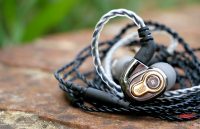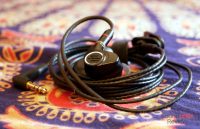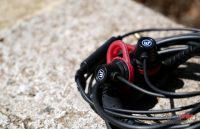Co za wielki dźwięk! That’s Polish for “what a huge sound!” and that was my reaction to first hearing the Lime Ears Lambda. Well, it was not those exact words, but you get the idea (though I am studying Polish in fact). Despite having just two balanced armatures, the Lambda are able to deliver a highly detailed sound signature which fans of slightly bright signatures will like. These Polish earphones have a few tricks up their sleeves, but also face some limitations that end up seriously hindering them.
Disclaimer: I received this unit on loan from Advanced MP3. The Lime Ears Lambda have a suggested retail price of €480. Additional information is available on the manufacturer’s website.
TL;DR: recap
| Pros |
Cons |
| Good accessory set
Fantastic midrange detail |
Large and uncomfortable
Tuning issues Often fatiguing treble Low instrument separation and poor imaging |
Rating: 6/10
Packaging & Accessories
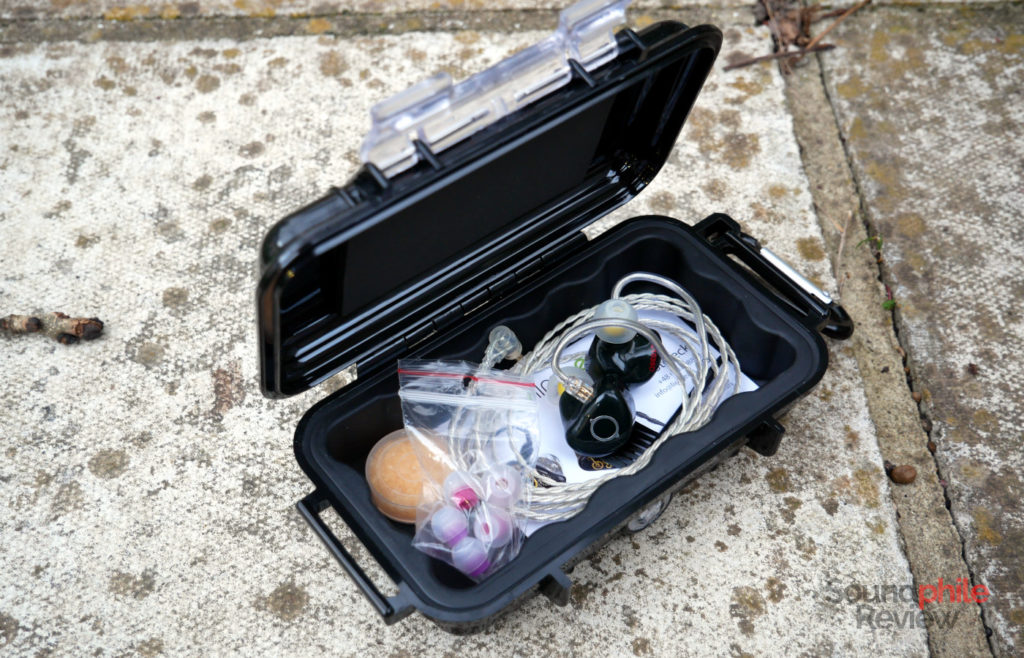
The Lime Ears Lambda come in a Pelican case that’s as large as it’s probably able to resist an atomic conflict. It even has an automatic pressure purge system! Inside this fancy case are the earphones with their cable, four pairs of Spinfit eartips and a brush to clean the eartips. While not super-large, this set of accessories is quite good.
Design & Comfort
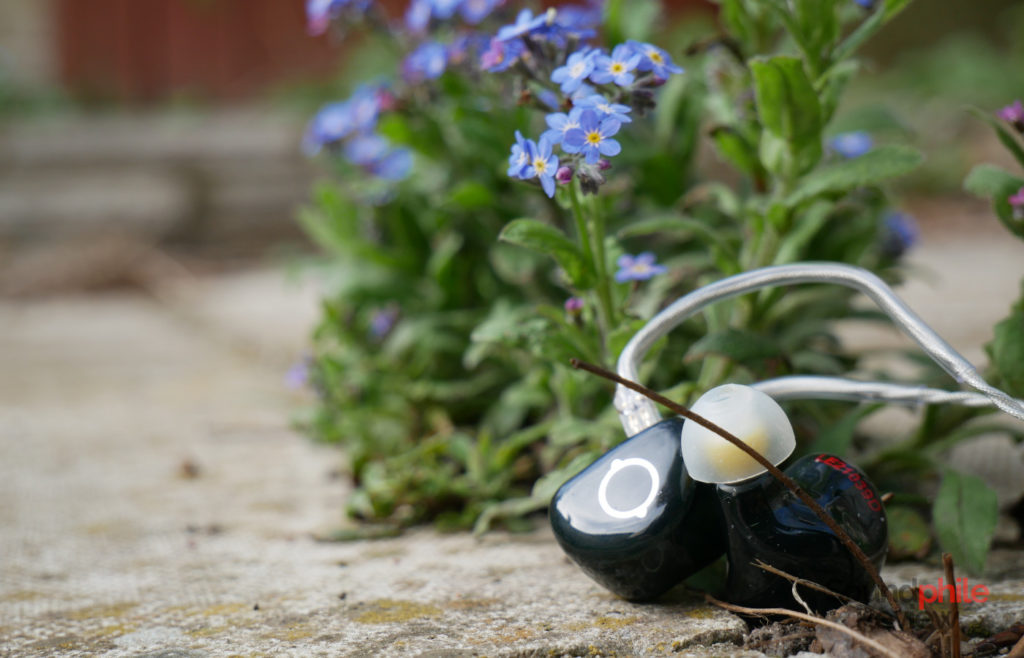
The Lime Ears Lambda are quite unremarkable in terms of design. They have nothing special – not the colour, not the shape, not the materials. The only distinctive element is that the shell is semi-transparent, which is quite nice actually. Otherwise they’re average earphones that could cost anything from $15 to $1,000. They have the Lime Ears logo in silver on the faceplate, but that’s it.
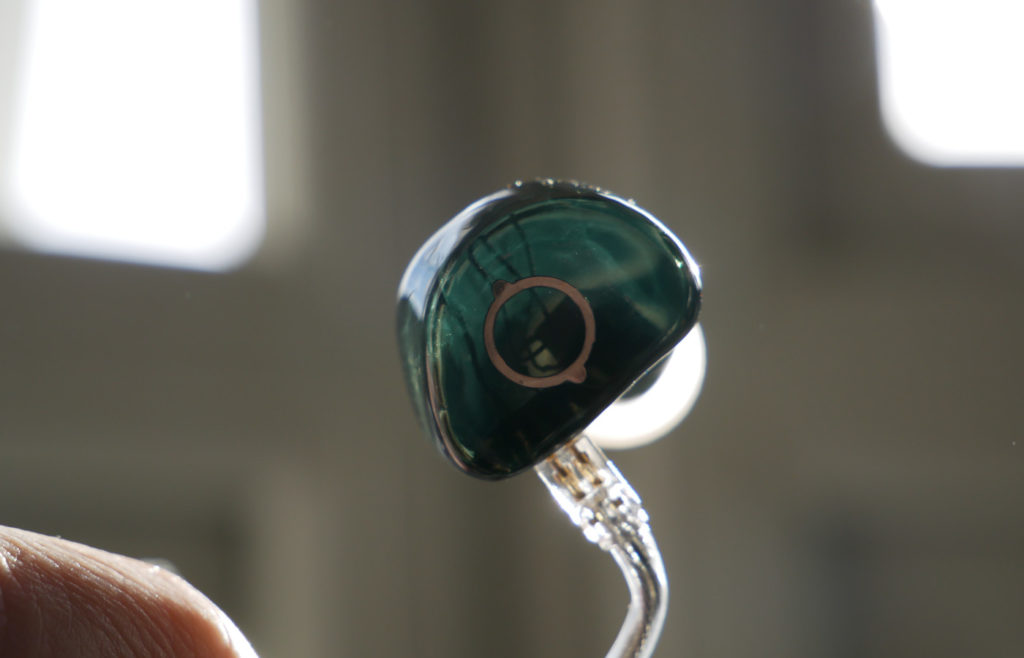
Lime Ears apparently decided to use a single shell design for all their universal earphones, independent of how many balanced armatures are inside. As they manufacture earphone with lots of drivers, this means that the shell needs to be spacious enough to accommodate any setup. That’s why the Lambda are so large despite having only two balanced armatures – the shells are in fact 90% empty.
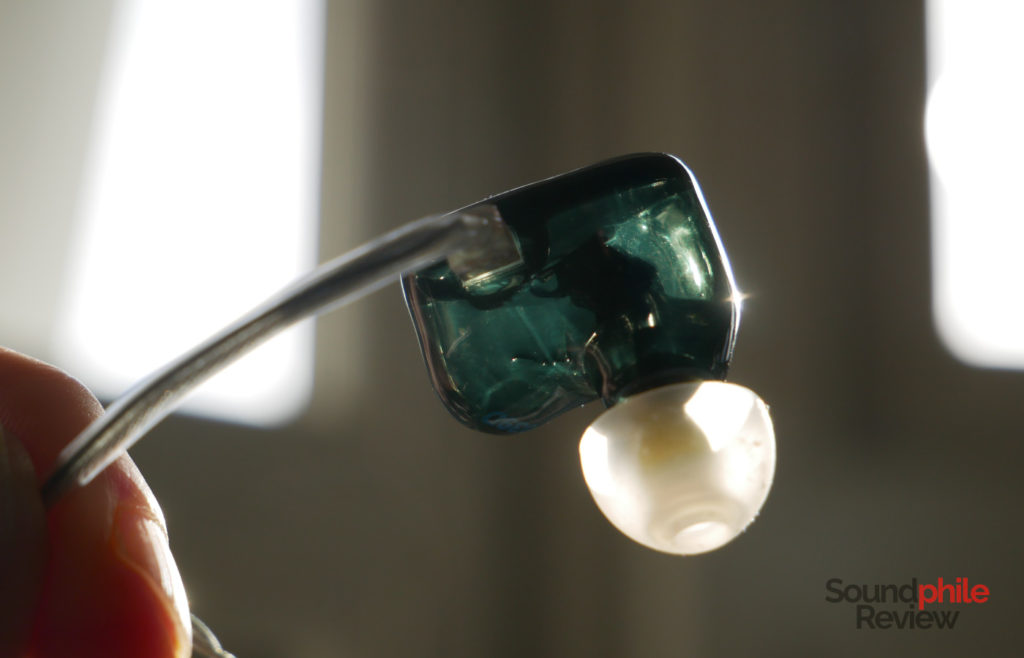
Build quality is generally quite good, but if I touch the left earphone while it’s in my ear I can definitely hear a buzz, something rattling, as if two metal wires were shaking against each other. That’s exactly what I think is happening, as looking at the earphones in the backlight I can clearly see the two wires moving around.
Comfort is impacted by the size: I personally could not find a comfortable fit for the earphones that would last more than an hour. Had the shells been smaller this probably would not have been an issue. The main source of discomfort lies in the protrusion above the nozzle: if it had been smaller it probably would not have caused any problem. I also found that using another cable, in this case the Yinyoo brown 8-core silver plated cable, significantly improves comfort.
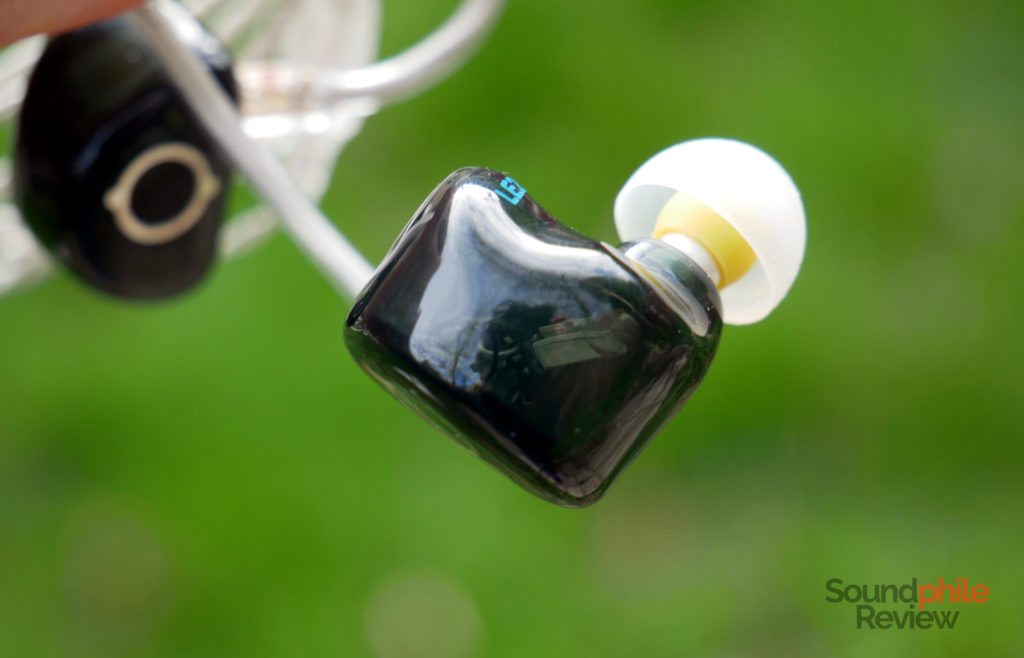
Isolation is decent, but limited anyway: I wouldn’t use the Lambda in a very loud environment. I guess that’s because the shell themselves don’t offer much noise reduction due to being completely hollow.
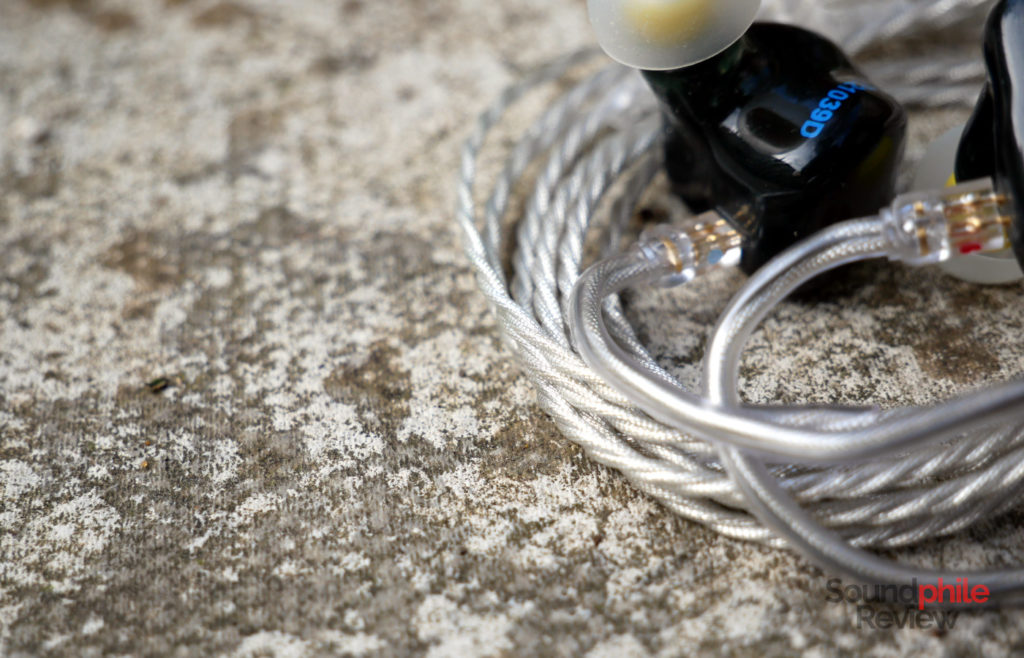
The cable is quite uncomfortable due to the metal wire that forms the ear hook; getting it to the right shape has proven quite difficult to me. There are four cores in total, two per channel, all seemingly silver-plated. It’s not really thick, but it appears to be durable.
Sound & Specs
When testing the Lime Ears Lambda I used a variety of sources to rule out any possible issue with a specific source. So I used a RHA DACAMP L1, an iFi hip dac, a Burson Audio Playmate, a HiBy R5, a FiiO M9 and a Shanling M2X.
Lime Ears Lambda |
| Frequency response | N/A |
| Impedance | N/A |
| Sensitivity | N/A |
The Lime Ears Lambda uses just two balanced armatures, which the company does not specify in more detail. They just say one is for lows and mids, the other for highs.
The Lambda offer a wide soundstage with some depth: it’s much wider than one would expect out of closed-back IEMs, which is quite remarkable. There’s also good imaging in terms of stereo placement (left-centre-right), but it’s not that good when it comes to the position of individual instruments in the scene as the instruments do not have clear, well-defined spots. Instrument separation is not really good: even in modestly crowded tracks there is a lot of mash-up between the different instruments, so the track as a whole becomes confused and messy. With few instruments the situations is much better and there’s commendable clarity – think of tracks such as Roberto Olzer Quartet’s Skyscapes.
Bass is tonally very good: although it doesn’t hit the lowest depths, it offers decent depth and a good balance just like you would expect from a balanced armature. It’s just south of neutrality, so it’s a bit de-emphasised compared to what would represent “perfect” neutrality (in quotes as perfection doesn’t belong to this world!). So the Lambda do very well in terms of tonality, but the other things it doesn’t do so well. Lows appear slower than I would expect them to be when produced by a balanced armature, plus they sound muddy and not really well detailed. They are not really well controlled and appear almost as if they were not in focus – you know when you take a picture and the subject’s not in focus? The effect is kinda the same, though it’s for audio. It’s weird.
Lime Ears claims the Lambda are “neutral in tonality with a slight focus on the upper-midrange” and that’s almost true. The “almost” comes from the fact that midrange lacks presence in the lower area and this, together with the accent on the upper area, makes it sound quite odd. Male voices and pianos sound somewhat distant and lacking presence and body, as if they were hollowed out, while trumpets, flutes, violins and other similarly high-pitched instruments sound almost overly present and vibrant. As a practical example, the violin in Philip Glass’ That Place is so predominant it’s almost fatiguing, but the same can be said for many other tracks with high-pitched instruments (e.g. Snarky Puppy’s Grown Folks). There’s a very good amount of detail, which makes mids pop out and sound especially attractive; wind instruments are those that benefit the most from this as they appear quite lively.
Treble has too much emphasis and ends up being fatiguing. Listening to Philip Glass’ Anthem – Part 1 from the Powaqqatsi soundtrack I notice how the tambourine and the triangle are almost piercing; the same applies to the following track, That Place, which has the triangle constantly hitting and constantly piercing my ears. There seems to be a peak in the lower area, around 3 kHz, followed by another one around 5 kHz and by a third around 8 kHz. After that there’s not much, so treble appears not really extended.
Lime Ears Lambda Comparisons
Alas I do not have access to my full collection of headphones while I am writing this review due to the COViD-19 pandemic, therefore I am only able to compare the Lambda to a more expensive IEM and to a more affordable one:
- Lime Ears Lambda vs Moondrop A8: the Moondrop A8 offer more and deeper bass, which comes with more detail and more control, with more physicality too. Midrange has better balance, with more presence in the lower range but also better presence in the middle region; it’s more detailed and faster. Treble is much better on the A8 as it’s more extended, more detailed and nowhere near as fatiguing. The A8 sound much more open and “lighter” than the Lambda, probably thanks to the more extended highs. They’re also more detailed overall. Soundstage is wider on the Lambda, but the A8 have more depth. Imaging is better on the A8, which also win in terms of instrument separation.
- Lime Ears Lambda vs Shanling ME500 Platinum Edition: the Shanling ME500 Platinum Edition offer more bass, but also much more clarity over the Lambda. Bass is more extended, more present and more physical, though that’s no surprise given it uses a dynamic driver; what’s more surprising is that there is more detail. Midrange is more balanced, too, with better presence in the lower area and in the middle one, but less detail. Treble is more extended and without the fatiguing peaks, so it ends up being more open-sounding too. Soundstage is wider on the Lambda, though not by a wide margin, while imaging and instrument separation are better on the ME500.
Final Thoughts
While highly detailed and spacious, the Lime Ears Lambda deliver a sound signature with multiple issues. Their low instrument separation makes them unsuitable for even moderately complex music, as the instrument mix up and lose their identity. In order to get better results you have to pump up the volume, but due to the prominence of the upper midrange and to the peaks in the treble area that becomes problematic. If we add to this fact that the universal version of the Lambda, which I tested, is absolutely not comfortable to wear due to its huge size, it becomes apparent that the Lambda have clear issues that need to be fixed.




